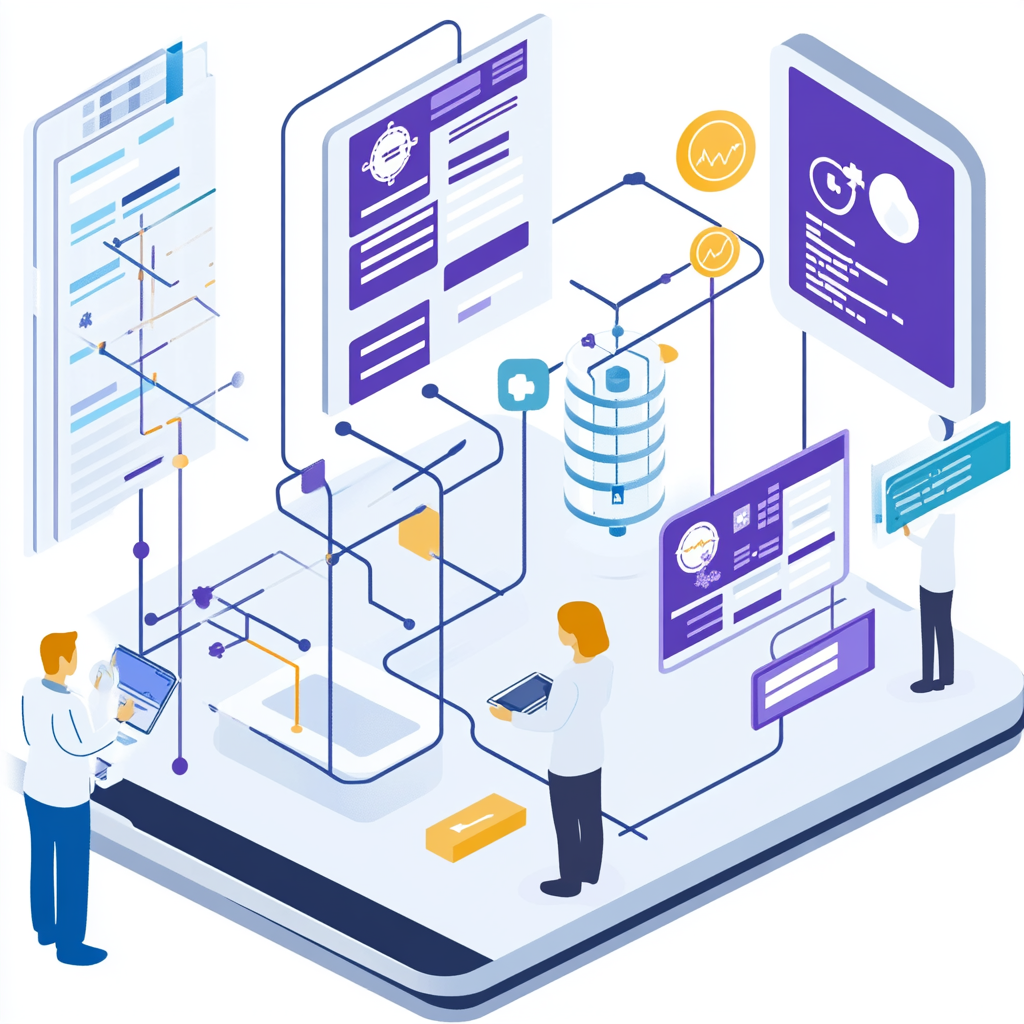Life Sciences
Master Data Architecture in the Life Sciences Sector: Core Features & Structural Integration
In the Life Sciences sector, where operational complexity meets stringent regulatory demands, a robust master data architecture is the backbone of efficiency, compliance, and innovation. From power grids and pipelines to renewable energy assets and customer billing systems, structured data governance ensures seamless operations in an industry undergoing rapid digital transformation.
The Data Challenges Shaping Life Sciences:
Regulatory risks from non-compliance with FDA, EMA, and GDPR requirements.
Complex product lifecycles with fragmented data across R&D, manufacturing, and distribution.
Serialization & traceability gaps leading to recalls or counterfeit drug risks.
Inefficient clinical trials due to siloed patient, site, and trial master data.
Slow time-to-market caused by manual data validation and approval workflows.
FORTE4’s SAP Master Data Governance (MDG) Solutions
End-to-End Product Governance
Centralize material, formula, and batch master data for drugs, biologics, and medical devices.
Streamline change control processes for product lifecycle management (PLM).
Regulatory Compliance Automation
Embed regulatory rules (FDA 21 CFR Part 11, EU MDR) into data workflows for audit-ready compliance.
Ensure accurate serialization data (DSCSA, EU FMD) for global track-and-trace mandates.
Clinical Trial Excellence
Govern trial master data (sites, investigators, protocols) to accelerate study setup and monitoring.
Integrate SAP MDG with clinical systems (CTMS, EDC) for real-time data consistency.
Supplier & Quality Management
Validate supplier data for GMP/GDP compliance and ethical sourcing.
Automate quality incident workflows to reduce deviations and recalls.
Pre-Built Accelerators: Industry-specific SAP MDG templates for pharma serialization, medical device UDI, and clinical data harmonization.
Why FORTE4 for Life Sciences?
Regulatory Expertise: Teams versed in FDA, EMA, ICH, and ISO 13485 standards.
End-to-End Integration: Connect SAP MDG with ERP, LIMS, Veeva, and MES systems.
Featured Use Case:
A gas utility uses SAP Master Data Governance (MDG) to integrate pipeline integrity data (from Internet of Things (IoT) sensors) with SAP ERP for maintenance scheduling and regulatory reporting. This structural integration reduces leak risks by 25% and ensures real-time compliance with PHMSA standards.
A global pharmaceutical company partnered with Forte4 to unify drug master data across 12 manufacturing sites and 50+ markets. Results included:
90% faster batch release via automated data validation.
100% DSCSA compliance for U.S. serialization mandates.
$5M annual savings from reduced manual data entry and recall risks.
Ready to Accelerate Compliance and Innovation?
Contact FORTE4 to discover how SAP MDG can transform your data governance and elevate patient outcomes.
Case Study: Implementing a Custom Data Model for a Global Pharmaceutical Client
Client Overview
A multinational pharmaceutical company faced challenges in managing fragmented product, vendor, and clinical trial data across 130+ countries. With operations spanning drug development, manufacturing, and commercial distribution, the client needed a unified data architecture to streamline compliance, accelerate time-to-market, and enable cross-functional analytics 4 8.
Key Challenges
Data Silos: Disparate systems (e.g., SAP, legacy ERPs, CRM platforms) stored conflicting product and vendor data, causing inefficiencies in procurement and regulatory reporting 1 2.
Regulatory Compliance: Inconsistent data formats hindered adherence to IDMP, FDA UDI, and EU MDR standards, risking penalties 10.
Inefficient Clinical Trials: Siloed patient and trial data delayed drug development cycles and increased costs 3 14.
Supply Chain Complexity: Lack of a centralized product master led to inventory mismatches and delayed launches 8.
Custom Data Model Solution
The solution centered on a Master Data Management (MDM) framework with a tailored data model designed for scalability, compliance, and interoperability.
1. Data Harmonization & Governance
Unified Product Hierarchy: Consolidated 500,000+ product records from SAP, JD Edwards, and legacy systems into a centralized MDM hub. Attributes like SKUs, regulatory codes (e.g., GTIN), and material specifications were standardized using modular taxonomies 8 4.
Vendor Data Model: Introduced new attributes (e.g., parent-child hierarchies, tax IDs) to improve supplier risk assessments and automate compliance with the Sunshine Act 2.
Clinical Trial Integration: Mapped patient cohorts, protocol numbers, and adverse event data to a federated model, enabling real-time analytics for trial optimization 14.
2. Technical Implementation
Architecture: Deployed Kalido MDM with Oracle and Informatica for ETL processes, ensuring seamless integration with SAP S/4HANA and AWS-based data lakes 4 11.
AI-Driven Data Quality: Leveraged machine learning (AWS SageMaker) for automated data imputation, reducing missing values by 98% 11.
Role-Based Access: Implemented IAM policies to restrict sensitive data (e.g., pharmacovigilance records) to authorized teams 9.
3. Compliance Automation
Embedded regulatory rules (e.g., IDMP, GMP) into workflows, auto-generating audit trails and Digital Product Passports for EU compliance 10 8.
Enabled real-time UDI submissions to FDA GUDID via API integrations 8.
Outcomes
Cost Savings:
Operational Efficiency:
Compliance & Risk Mitigation:
Data-Driven Insights:
Key Takeaways
Scalability: The modular data model supports future expansions, including IoT integration for real-time equipment monitoring.
Cultural Shift: Training programs fostered a data-driven mindset across R&D, procurement, and compliance teams 14.
Sustainability: Reduced material waste by 20% through predictive inventory analytics 3.












